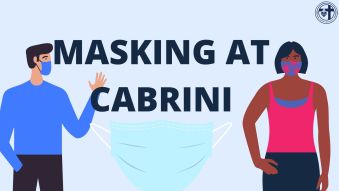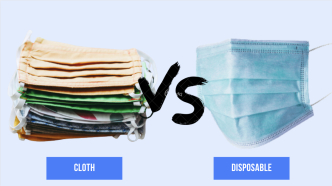
Confusion and debate continue to surround masks more than two years into the pandemic.
It’s time to set the record straight as experts and the Cabrini community weigh in on the effectiveness of masks and navigating the changing guidance.
As COVID-19 mutations – Delta Variant and Omicron Variant – spread across the globe, the CDC (Center for Disease Control and Prevention) and FDA (Federal Drug Administration) urge the public to upgrade their masks. Cabrini University also advises the community to upgrade their masks for extra protection. However, upgrading masks is no easy feat as finding the right one can be tiresome, tedious and costly.
The CDC continues to advocate mask-wearing and implores individuals who aren’t up to date on COVID-19 vaccines and boosters to wear masks indoors. The CDC also advises that everyone should wear masks outdoors in high-risk transmission areas with close contact with others.
While countless masks and respirators exist on the market, it can be confusing. The international KN-95 respirators and the NIOSH (National Institute for Occupational Safety and Health) approved nonsurgical N-95 respirators are expensive upgrades from cheap cloth or surgical masks.
Hannah Boone, a Cabrini sophomore, found it difficult and expensive to purchase an upgraded mask.
“Coming into this semester, I was fortunate enough to purchase KN-95 masks off Amazon, but it was an outrageous price,” she said. “My parents covered the cost to make sure I had an efficient supply of quality masks. It was a pack of 50 masks for me and my roommates to use. It’s hard to come by now and the ones the government are handing out are coming out slowly.”
Cabrini University recently sent out the third 60-second COVID-19 update video with key information on combating the virus. In the video, viewers can find where to get free masks.
Cabrini’s COVID-19-page links to the Health Resources and Services Administration (HRSA) website where it shares how to get a free mask promised by the Biden-Harris administration. HRSA released N-95 respirators to select health centers nationwide.
Kendall Trumbore, a Cabrini sophomore, shared her thoughts on masking at Cabrini University.
“Cabrini University from the administrative standpoint is being fairly consistent with mask-wearing over email or video reminders. I would say that this semester, a lot of students are being a little bit more relaxed with their approach. I’ve seen a lot of people wear their masks on their chin, or they don’t wear it at all…There’s also not any social guidelines, leading to some awkward scenarios when you have to remind a stranger about mask protocols.”
Information on masks and respirators is easy to get lost in. However, the CDC offers stress-reducing advice. The CDC “[recommends] that you wear the most protective mask you can, that fits well and that you will wear consistently.”
A mask breakdown, supported by the CDC and FDA, are as follows:

Cloth masks (with a nose wire) need to be properly fitted over the nose, mouth, and chin with no gaps to prevent particle leaks. These masks need to be cleaned at least once a day or when the mask gets dirty. For extra protection, wear a disposable mask or Kleenex underneath the cloth mask.
Disposable procedure masks, or surgical masks (with a nose wire) need to be properly fitted over the nose, mouth, and chin to avoid gaps similar to cloth masks. Disposable masks are one use only and need to be thrown away. For extra protection, wear the disposable mask or a Kleenex underneath a cloth mask.
Other face coverings, such as scarves, ski masks, balaclavas, masks with exhalation valves or vents and hard-to-breathe masks are not effective. The CDC lists the dos and don’ts here.
The CDC and FDA have proven that N-95 respirators are the most effective face-covering to stop the spread of COVID-19.
The FDA says that “Air-purifying respirators, known as respirators, including filtering facepiece respirators (FFRs) such as N95s and surgical N95s, filter at least 95 percent of airborne particles.”
A respirator breakdown, supported by the CDC, FDA and NIOSH, are as follows:

N-95 nonsurgical respirators are approved and regulated by NIOSH and are the preferred option rather than the KN-95 alternative. N-95 respirators should be clearly labeled as N-95 and have two elastic bands that fit around the head – otherwise, they are considered fake and ineffective. Respirators should fit faces correctly and be able to be sealed tightly.
KN-95 respirators are not approved by NIOSH but are used internationally. They are supposed to properly fit faces and around the ears. KN-95 respirators did not meet the requirements of a 2020 & 2021 study conducted by NIOSH.
Counterfeit N-95 and KN-95 respirators are being falsely marketed as being approved by the CDC and NIOSH. The CDC has more information on fake respirators and how to identify them.
Cabrini University has many resources and information on masks and COVID-19 on the Cabrini website. Students can visit Health Services at Founder’s Hall, room 98. Students, staff, faculty and families can also track Cabrini COVID-19 updates through Cabrini’s COVID-19 Case Tracker. More information here.




